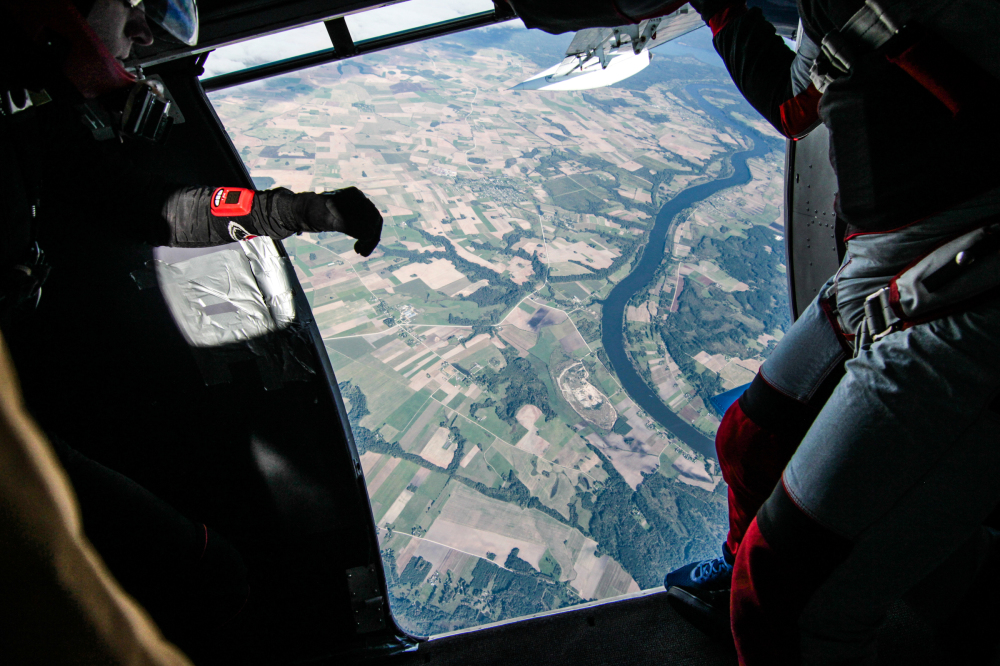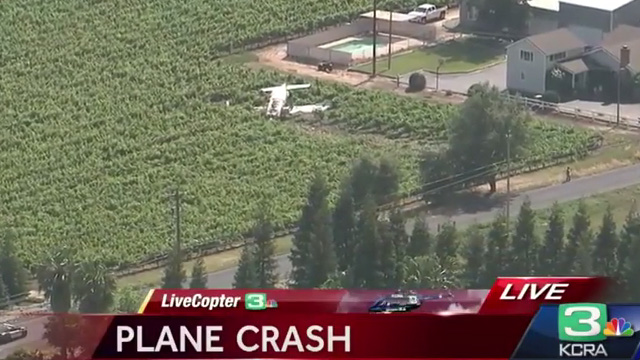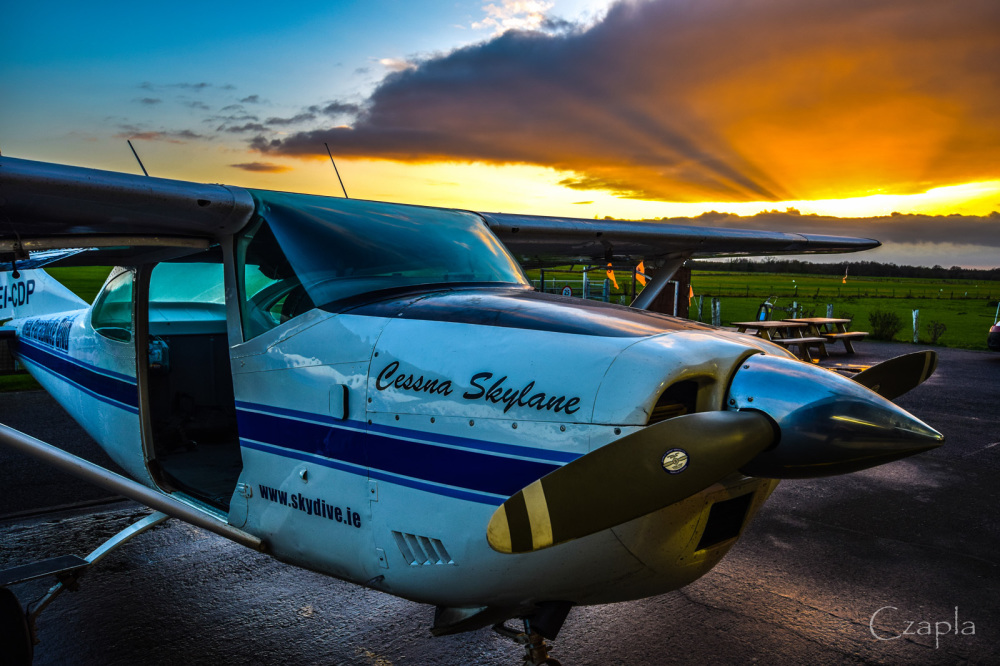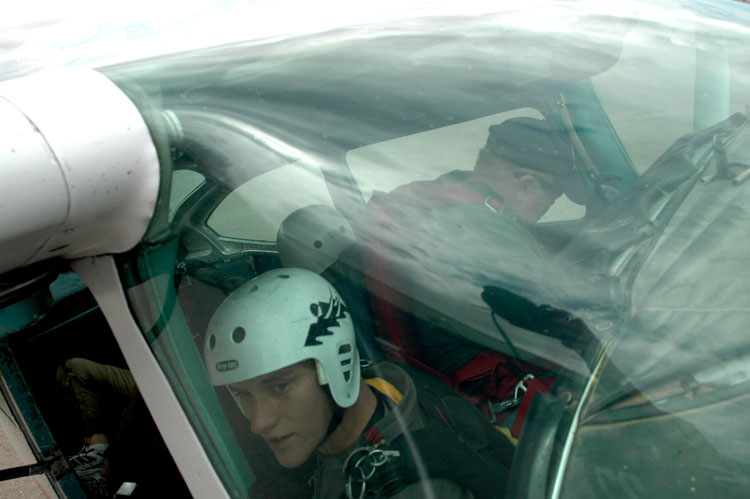Search the Community
Showing results for tags 'in the plane'.
Found 5 results
-
You Gotta Do It Right, Every Time Lead image by skydivegirlplIn the Frankenstein world of skydiving aircraft--where the original innards have been ripped out and kinda-sorta replaced here and there with lighter components--we’ve had to rethink this whole “seatbelts” thing with an eye to minimalism and ease of use. (For contrast, check out the amount of webbing with which aerobatic pilots festoon themselves.) In almost every case, skydiving has had to invent new procedures to maximize the utility of restraints while lacking the backing support of a seat. Hear this, dear readers: These “new procedures” vary in effectiveness. Very few skydivers are properly educated. The details matter. Belts for BenchwarmersAre you sitting in a comfy, capacious aircraft with side benches? Lucky you! You can enjoy the proven-safest restraint configurations available to modern skydiving. Hooray! The reason that lap belts should only be used by side-facing skydivers is that they are maximally effective when there is a solid support surface behind the occupant: a seat back, an aircraft sidewall or a bulkhead. (A particularly burly swooper doesn’t count.) Already bored and sure you know how this lap belt thing goes? Hold up. Did you know that you should be routing your lap belt between your main lift web and body when you’re sitting on a side bench?** “Whoa,” you say. “This means that the restraint belt does not simply go over the top of my glorious lap, as I am used to.” You, dear reader, are correct in that observation. Routing the male end of the lap belt between your belly and main lift web as it’s on its way to the latch on the other side is the way to go. It’s proven to make you less likely to slide out of it in the slippery, bucket-seatless context of a jump plane. Restraints For Floor FolksIf you’re on the floor, this is your huckleberry: A single Hooker belt, wrapped around a single hip, close to the ring. These aren’t as good as the big-plane lap belts, because single-side belts have a disconcerting tendency to impose massive, twisting, sideways loads on a jumper's spine. There’s also a huge flail arc for the head, which can result in significantly reduced thinking for the rest of the jumper’s natural life. That said: if it comes down to it, at least your meat stays put, inside the plane, and you don't end up suffocating your buddies at the front of the cabin. “What fresh hell,” you are probably wondering, “Is a Hooker belt?” Calm down--you’ve totally seen one. A Hooker belt is what we call single-point skydiver restraints. They’re ‘Hooker belts’ because they were invented by Jack Hooker. (If you recall, we mentioned him earlier in this series; he’s the fellow who developed restraints in response to the multiple-fatality crash in Hinckley, Illinois that claimed many of his friends.) To see how it’s done, take a little journey with me back to nineteen-ninety-something, when the FAA last took photos for its Sport Parachuting Advisory Circular. Play some Ace of Base and put your hair up in a side ponytail so the photos aren’t so jarring, then take a look. 1. Sit close to the attachment point, facing the back of the plane. 2. Pass the male end of the restraint under the upper part of the leg strap closest to the attachment point. 3. Pass it under the main lift web*. 4. Latch it close to the hip ring. 5. Aim to sit so you have a 45-degree angle between the point the restraint attaches to you and where it attaches to the floor. 6. Tighten until there is little slack. The more slack you have, the further you will travel before impacting something in the cabin in a no-bueno manner. A short leash also minimizes twisting and flail arc. Once you’ve got those methods down, it’s not over. There are a few more points to keep in mind, besides: Restraints don’t work if you can slide out. Ask the jumper who was ejected out the left door during a forced landing in Oklahoma. She was sitting with her back to the pilot and the belt only over her lap. Routing it through the harness would have kept her inside the plane, which is an excellent place to be when the plane is bouncing and crunching all over the ground. Beware the leg-strap-only method. In a tiny plane? Tempted to just tug a belt through your leg strap and fuhgettaboutit? Think twice. Crash tests have proven that single point, single tether restraints are not very effective. The direction you’re facing is actually important. Research has shown that, in order for the restraints to work properly, parachutists must face the tail (“aft”). Never ever ever share a restraint with another skydiver. Everyone on the aircraft needs to be secured individually. Yes, this is just as true for tandems. Tandem students should never be restrained by just clipping to the tandem instructor. If the tandem instructor is incapacitated during a crash, the student cannot unhook. This has killed at least one tandem student in Australia (by drowning). Don’t double up. You must have a single point of detachment to begin egress*** in an emergency. Panicky flailing, fear, fire and smoky visual impairment can all play into the ability to get out. Two attachment latches is one too many to work out in that kind of environment, as has been proven over and over again. Curb your camera. In the event of an impact, make no mistake--your flimsy little G3 is a projectile weapon, as is every loose bit and/or bob that’s rattling around your person. The length of a Twin Otter is plenty of space for them to reach ramming speed. Don’t let them get the opportunity. Leave your chest strap the hell out of this. Chest buckles are only rated for 500 pounds, while most other harness buckles are rated for five times that. If it does hold, it’ll flail you around like a demented cowboy misusing a lasso. Been in a cra...uh, forced landing? Get your gear checked out. Even though it’s a key part of how we protect ourselves from aircraft oopsies, a parachute harness was developed for deceleration from freefall, not partnering up with a restraint belt. Most manufacturers have not tested their harness configurations to see how they weather the jangling, multi-directional abuse of a forced landing. If you’ve been in a plane that’s gone down unexpectedly, send your rig to a rigger to check its airworthiness. The “tight cabin” theory simply ain’t true. Tightly packed loads do no better than their emptier counterparts during forced landings. The only thing that will protect you is a restraint system, not being shoved in like a sardine. You’re not buckling up for yourself. If you take one thing away from all this talk of restraints, remember this: When you do up that belt, it’s not for you. It’s for everybody you might crush if that plane smashes in. It’s for everybody you might fall on from the apex of your surprised-face zero-g levitation to the cabin roof. It’s for the pilot, who needs to be able to count on a certain balance of weight when shit is actively hitting the fan. And it’s for your friends--so they don’t have to stand around a bonfire in tears, wondering how to prevent it all from happening again. * The main lift web is the vertical part of the front of the harness--the webbing that your cutaway and reserve handles live in.
- 10 comments
- 7
-
- in the plane
- in the plane
-
See more
Tagged with:
-
A Seatbelt’s Job Goes Beyond The Crash Think your seatbelt only helps you when the metal hits the dirt? Nope. The magic of seatbelts goes far beyond the prevention of injuries and fatalities during actual impacts. Seatbelts also help the plane fly better and move more safely during maneuvers, sometimes preventing that impact from even occurring. The first way seatbelts do this is by helping to moderate the weight and balance of the aircraft. Limiting the numbers of jumpers on board to the number of seatbelts limits the risk of overloading the plane, which we all know is a bad scene (slower acceleration, sloth-like climb, stall danger due to higher stall speed, and the like). It also keeps the wiggly weight of the passengers pinned in place, helping the pilot maintain control. Take an example. One day, a Cessna 205 aircraft ran out of fuel just after takeoff from Celina, Ohio. (Everyone on board--the pilot and five parachutists--perished in the incident, so witness reports and NTSB investigation reports are all we have to explain what happened.) DiverDriver.com explains that, of the witnesses that reported hearing the airplane during climbout, each “described smooth engine noise, brief ‘sputtering,’ and then a total loss of engine power. The airplane descended straight ahead at the same pitch attitude, then the nose dropped, a parachutist exited, and the airplane entered a spiraling descent.” That first jumper left from the student position--as the door was under the wing and not in the rear like the Cessna U206. His exit abruptly shifted the weight aft, rendering the aircraft uncontrollable. Two more jumpers attempted to exit. The all three jumpers who exited the aircraft were unable to deploy parachutes. Everyone left in the aircraft perished in the violent resulting crash. Another sacred duty of the seat belt: to help the pilot maintain precious, tenuous drabs of control during violent maneuvers in the lower end of the altitude spectrum. Belts hold skydivers in place during the top-gun shit that pilots have to pull sometimes in order to avoid mid-air-collisions, stopping meat from rattling around the cabin and coming down unbalanced. Note: As skydivers. we’re at pretty serious risk for these, because this kind of incident is statistically most likely to happen in the crowded, lackadaisically-controlled airspace around the small airports we tend to frequent. When two planes go head-to-head, pilots are taught to pull power and dive to the right--which slams un-belted jumpers right up into the ceiling. The landing is a mystery, but if too many of them land too far aft, the airplane will be unbalanced, stall and spin. Whee. Ugh. “Sure,” you say, “But that shit hardly ever happens.” Au contraire. In the next installment, we’ll take a look at the long list of recent incidents you haven’t even heard about--and meditate on the totally-coulda-been-you aspect of the thing.
- 7 comments
- 7
-
- in the plane
- in the plane
-
See more
Tagged with:
-
You Probably Aren’t Aware of All These Oopsies Screengrab of the 12th May 2016 Lodi incidentSeatbelts help. You probably get the picture by now. But do you know just how many lives they’ve saved in the past couple of years alone? Oh, man. Loads. At time of publication, USPA dropzones use seatbelts. Even the legendarily non-USPA maverick dropzone at Lodi had seat-belt use essentially imposed on it--which resulted in all souls walking away from that dropzone’s 2016 Cessna Caravan forced landing in a vineyard. The pilot suffered a bloody nose. (He was not wearing a shoulder belt--nor his emergency bailout rig. Tsk tsk.) They were shaken, but okay--and they haven’t been the only ones. Over the last couple of years, forced landings all over the world have seen most of the jumpers survive, in great part because of that friendly webbing. On December 4, 2014, A Cessna 205 out of Sussex, New Jersey suffered a total loss of engine power during its initial climb. The in-cabin video shows the forced landing going smoothly until the nose wheel dug into a muddy field and flipping the plane onto its back. All five seatbelted souls on board survived with minor injuries. Also in December of 2014, a Cessna 182 in Beromunster, Switzerland lost power shortly after take-off. The aircraft broke its nosewheel in a field, but all five occupants--seatbelts fastened--made it out with bumps and bruises. On May 10 of 2015, an Antonov out of Azov, Russia experienced high engine temperatures that forced an immediate landing. While the crash was severe enough that a post-landing fire destroyed the fuselage, all 13 (seat-belted) occupants got out in time, and survived with minor injuries. On June 29 of 2015, a Cessna 182D out of Oak Harbour, Washington lost engine power. It struck a tree during the forced landing, which was short of the runway. The impact split the fuselage in two at the instrument panel. Unsurprisingly, the pilot was seriously injured (but survived). One passenger was injured after being ejected from the open fuselage. On July 12 of 2015, a Cessna took off from Barnegat County, New Jersey. The crankshaft failed shortly after take-off, forcing a landing right on the highway. The traffic camera shows the plane landing on the right lanes and rolling onto the grass median towards the end. The pilot and all four passengers survived with hardly a scratch on them, thanks to their seatbelts. On July 7 of 2015, a Cessna Caravan lost engine power shortly after taking off from the desert dropzone in Dubai. The forced landing into the sand dunes started a fire that consumed the airframe, but everyone--including the pilot--was able to unfasten their seatbelts and get out before it burned up. In August of 2015, a Turbo Finist carrying a pilot and ten skydivers crashed shortly after taking off from Casale Monferrato, Italy. The impact of the landing bent the wings, broke the main undercarriage legs and smashed the engine compartment. Everybody wore seatbelts. Everybody walked away. In October 2015, a Yak-12 carrying three skydivers force-landed in Poland, hard enough to break the main undercarriage. The video starts with a glance at their fastened seat-belts and ends with them running away from the wreckage. Later that October, one of Dubai’s Twin Otters crashed on landing. Only a pilot was onboard. He survived, despite major damage to the airframe, thanks to his handy webbing. On April 28, 2016, an antique biplane lost power and force-landed near Osage in the American midwest. The pilot plus two skydivers put the airplane at gross weight, and both skydivers stood on the lower wing, grasping the front cockpit edge. This created more drag than usual for what was originally a two-seater trainer with only 220 horsepower. The plane never climbed very high and force-landing in a field, hard enough to break both main undercarriage legs. The "safety straps," as sketchy and unofficial as they must have been, kept those skydivers onboard during what must have been one hell of a clenchy forced landing. (For comparison: a couple of years earlier, another skydiver was incapacitated by carbon monoxide--because he had been holding on right behind the exhaust--and fell from the lower wing of a PT-17 biplane at an altitude too low to open a parachute. If that jumper had had a safety strap, they’d be alive today. Thanks to rockstar Sebastian Alvarez’s video, most of us are familiar with the May 12, 2016 crash of a Cessna 208 Caravan at Lodi. Engine failure shortly after takeoff forced a landing. During the roll-out, the plane struck a truck and rolled into a ditch, inverting at low speed. When the airplane ground to a halt, the entire load was hanging from the ceiling. All 17 skydivers exited uninjured. The last frame of the video shows the pilot washing blood off his nose--which shoulder belts would have prevented. On July 3, 2016, a Cessna 206 out of Gilchrist, Texas had to land when an engine broke a connector rod shortly after take-off. The pilot landed upright on Crystal Beach. There were zero injuries. On August 3, 2016, a Cessna TU206 lost power 1,000 feet after its takeoff from Skiatook, Oklahoma (which, coincidentally, sees more than its share of aviation mishaps) and had to come down in a grassy field. The impact buckled the airframe in a major way, but everyone was belted. All seven occupants survived with minor injuries. Quite recently to this publication--In September of 2016, in fact--a plane out of DC Skydiving had to land right after takeoff. All 11 skydivers and the pilot wore seatbelts, and all walked away uninjured. The plane didn’t fare so well.The thing about seatbelts, of course, is that they don’t work if you don’t use them--or if you use them wrong. In the next installment, we’ll talk about how to use a seatbelt on a skydiving plane, ‘cause there are some sketchy little myths floating around.
- 2 comments
- 3
-
- in the plane
- in the plane
-
See more
Tagged with:
-
The History Lesson You Never Got Image by Lukasz SzymanskiIf you look at the National Transportation Safety Board (NTSB) reports, DiverDriver.com, our own Dropzone.com and the world’s newspaper reports, you’ll notice something interesting: the last couple of years were bad for forced landings, but good for survivors. Since December 2014, the total has been 18 forced landings, involving more than 100 occupants--but only one fatal crash (the May 2016 tragedy in Hawaii, the circumstances of which were too violent for safety restraints to have helped). Every incident is, of course, multifactorial, but there’s a simple reason that more skydivers haven’t been grievously injured or killed in these crashes: correctly installed, correctly used seatbelts. In an incident that involves a loss of power after takeoff and forces a landing, it’s seatbelts that save the jumpers’ (and pilots’) hides. It hasn’t always been this way. Seatbelts for skydivers used to be just as casual as seatbelts for motorists used to be, in the good-old-bad-old days. In the late 1970s, very few jump planes had seat belts. Single-Cessna DZs flew third-hand airplanes that were gutted to reduce weight, while large "destination" DZs flew World War 2 surplus DC-3s and Beech 18s. These war-surplus airplanes had been through so many different owners, and gutted so many times, that the original seat belts were an ancient memory. A few rare jumpers counted themselves lucky if they had a frayed cargo strap to hold onto. A Change in PolicyThen a series of bloody accidents in the early 1990s forced the FAA to enforce its preexisting FARs requiring seatbelts for everyone in the sky. These FARS require all skydivers to be seated and belted in for taxi, take-off and landing (as and when that eventuates). It’s easy to forget why this maybe-sometimes-silly-seeming rule was set down, but there’s lots of scar tissue to back it up. Our POPS mamas and papas learned the hard way, so we don’t have to. The first tragedy in this particular series struck at Perris in April of 1992. Contaminated fuel caused a Twin Otter--containing two pilots and twenty jumpers--to lose power at 200 feet over the runway. The engine failed, and the pilot feathered the wrong prop, causing a total loss of thrust. When it came back down, the aircraft over-ran the runway into a drainage ditch. The airplane slammed to an abrupt halt. The fuselage collapsed all the way back to the bulkhead at the rear of the cockpit, killing both pilots instantly and sliding the unbelted skydivers to the front of the cabin, crushing or asphyxiating each other in the process. Six skydivers were taken to the hospital with serious injuries. Sixteen died. (For a detailed account, read survivor Dan Brodsky-Chenfeld's book, "Above all Else." Make sure you have Kleenex available when you do.) The second pivotal crash occurred Labour Day 1992, in Hinckley, Illinois. That day, a Beech 18, full of holiday tandems, lost an engine shortly after take-off. They never climbed high enough to bail out. The pilot prepared to force-land in a farmer's field, but got too slow when he reduced power on the good engine. The Beech stalled, flipped and dumped the unbelted jumpers on their heads. Everyone on board was killed. At one of the many, many Hinckley ash dives, Jack Hooker brought a keg of beer and told the gathered mourners that he had been working on a solution. He had installed prototype seatbelts in the Cessna 182 that hauled jumpers during slow days at Hinckley. He sewed custom seatbelts for aerobatic, glider and warbird pilots. It’s a good thing he was on it. Over the winter of 1992/1993, the Federal Aviation Adminisration laid down the law for the USPA: either make seatbelts fashionable, or suffer industry-crushing regulatory consequences. From there, the USPA did a commendable job of popularizing seatbelts among skydivers. During the first AFFI course of January 1993, candidates were told to belt themselves in before taxi or they’d fail the evaluation dive. At the time, it was revolutionary, but the policy was vindicated a few months later--in the spring of 1993--when another Twin Beech crashed near Xenia, Ohio and everyone onboard survived. Soon, seatbelts became the new norm almost everywhere. No Guarantees“Almost everywhere,” unfortunately, hasn’t been able to save everybody. In July of 2006, a Twin Otter crashed in Missouri. There were some seatbelts involved, but they were incorrectly installed and incorrectly used. Unrestrained skydivers slammed into belted skydivers at high speeds. All but two skydivers were killed; the two survivors were critically injured. One of those survivors, an American Airlines pilot, was paralyzed in the accident, therefore losing his career. He took his own life. On August 3, 2008, a Lodi, California-based King Air had a forced landing near Pitt Meadows, Canada. Because the plane had been fitted with just enough seatbelts to satisfy the FAA, but versions that were too short to wrap around the jumpers’ waists. As a result, only the pilot wore a lap-belt--and he was the least injured, because he had a proper seat and seatback. In the hard landing, all seven skydivers slammed forward in the cabin. Nobody died, but everyone on the load suffered grievously, and the jumper on the bottom of the pile ended up with a life-changing list of brain injuries. These days, seatbelts are de rigueur on non-sketchball dropzones around the world--and that’s a relief, because their importance goes well beyond their stopping power in the event of an actual-factual crash. In the next installment, we’ll talk about how seatbelts affect everything from general flight efficiency to wild evasive swerving.
- 9 comments
- 6
-
- in the plane
- in the plane
-
See more
Tagged with:
-
How to be a Good Passenger in a Jump Plane Note: Original text from an article written for April 1992 Parachutist. Since 1992 our fleet of jump airplanes has changed signifigantly. There are few planes like DC3's in use now which often have "loaders", and many pilots are now spotting airplanes with the help of the navigation equipment that is now more advanced. Please make adjustments for the changing technology. G.P. 2003 This article is written in two parts covering some of the most typical jump plane situations you will experience. The first part will be of interest to new jumpers who are learning to spot and to jumpmaster themselves and who are jumping from small airplanes. The second part is for intermediate jumpers from a small drop zone who may soon consider visiting another drop zone or going to a skydiving event that has larger airplanes. It will also be good review for experienced jumpers who do not jump large airplanes very often and forget how to be a good passenger. Small Airplanes: Loading- Loading a small airplane will become different as you gain more experience in skydiving. You will be doing different exits than you did as a student and will need to be arranged differently in the airplane. First of all, take the advice of more experienced jumpers as to the most efficient place to be for your skydive. If you are in an airplane with students, follow the seating arrangement that the instructor specifies. Be careful as you get near the airplane if the engine is still running. The door of small airplanes is always near the prop and the airplane owner will not appreciate you bending the prop by backing into it. :) The least noisy time during your flight is during loading and is the best time to tell the pilot how high you are going and in what direction you want the jump run. The pilot needs to tell Air Traffic Control how high the plane is going and hopes you won't change your mind too many times on the way up. Tell the pilot if you will being doing Canopy Relative Work or will be opening high for some reason. Pilots don't want to do surprise CRW with canopies they don't know are up that high. The position of the seat belts in the airplane will usually dictate exactly where you will be sitting. If this position is uncomfortable just remember that the Federal Aviation Regulations state only that you must wear them only while the aircraft is in motion on the ground and during takeoff and landing. Make sure that everyone doesn't sit too far to the rear and make the plane out of balance. The pilot would not have much fun flying it in this condition. Ask the pilot for advice on loading if you do not know. Jump Run- When you know it is almost time to jump you will usually be getting to your knees and making final adjustments to your gear. In getting up, try not to pull yourself up by the pilot's rig or pull any important items off the plane in doing so. Check for any part of your gear that may have been moved while getting up in a crowded airplane, especially your hand deploy pilot chute. There should be no need to say very much to a pilot at this point if they were sufficiently briefed on the ground, but be alert and understanding about anything the pilot may say to you. Your jump may be delayed while waiting for another jump plane or from instructions from Air Traffic Control, and those instructions will be hard to hear if you are yelling about why you aren't on jump run yet. Spotting- You will always need to wait for a signal from the pilot before opening the door. If the airspeed is too high the door will receive excessive stress and might even come off. The airplane's owner would be very unhappy with you as well as the home owner whose roof the door lands on. Giving corrections to the pilot on direction of flight can be verbal by saying "5 RIGHT" or "5 LEFT", or by simply pointing in the direction to turn. Most pilots will correct about 5 degrees in the direction you indicate and then level out and wait for further corrections. If you point, make sure your hand is up where the pilot can see it. Try to keep the corrections to a minimum because the pilot probably lined you up on jump run pretty close anyway. If you correct back and forth too many times even the pilot will get lost. :) Most pilots will cut back on the power when you get out, but it is a good idea to call for a "CUT" anyway before exiting. Exiting- Try to exit the airplane and get into your position as quickly as possible so the pilot doesn't have to struggle to keep the airplane right side up. However, be careful not to bump things on the way out like your pilot chute. It is also not wise to lean on the pilot too much just to get that perfect exit position. If you push too hard on the pilot or lean on the yoke of the airplane you will have a very interesting sideways exit. Large Airplanes: Loading- Loading a large plane at a new drop zone or at a large skydiving event will likely be an exciting event for you. There may be several large groups on the plane and you may get the feeling of being herded into the airplane. This is just a sense of urgency on the part of the crew, after all, these larger airplanes are more expensive to operate and must be kept busy in order to make money. Try to do your share by paying attention and helping move things along. Although the props on larger planes are further from the door than on smaller planes there may be more of them and they may be on the sides on the plane where you are not used to avoiding them, so be careful. Many of the largest airplanes will have a crewmember called a "Loader" that is in charge of loading the airplane and determining the exit order of all the groups getting into the plane. The loader is a buffer between the jumpers and the pilot and has to keep the jumpers in line so the pilot can concentrate on more important things like flying. Pay attention to the loader because they will be able to load you as quickly and efficiently as possible. When seating yourself in the airplane you can note how the people ahead of you are seated and follow suit. Seating is usually very cozy in these airplanes even though it looks roomy when you first get in, so sit close. Somes planes have loading lines painted or taped across a rearward section of the airplane and all of the jumpers must be forward of this line. If you see that not everyone is going to fit in this area, you might as well scoot back and tighten it up before you get too comfortable because the loader is going to be mean and make you crowd together anyway. Seat belts will be available and you might have to look carefully to determine which one you should be using. After everyone is seated and you are taxiing out to the runway, take a look around the airplane. There may be a sign somewhere describing the plane's emergency procedures in case of engine failure. You will want to be familiar with these procedures and really follow them if the real thing happens rather than just getting up and running around all excited. Some planes might also have posted a diagram of the drop zone and the jump run for the day. This is important information for the person spotting and helpful to anyone jumping at an unfamiliar airport. Jump Run- When it is time to jump you will be getting up to make final adjustments to your gear. Check for any part of your gear that may have been moved while getting up in a crowded airplane. There may be room in a large airplane to have someone give you a pin check. Even if it is possible to completely stand up in the airplane, don't feel like you must do this until time for your group to line up and exit. This will help reduce crowding in the plane. All adjustments to your gear can be made while kneeling anyway. Try to continue to keep forward of the loading line by not spreading out too much. The airplane may climb better like this and you might just get some extra altitude. Try keeping the noise to a minimum in case you get instructions from the loader or spotter. Spotting- On the larger planes the loader may also do the spotting for the whole load. This is another reason you should pay attention to and be nice to the loader, so you will make it back to the airport. Another possibility is that the pilot may be spotting from up front by using instruments and giving the exit command directly or by relaying the command to the loader. If the load is being spotted by looking out the door, the corrections must be relayed to the pilot who possibly cannot see the spotter. Some airplanes have pushbutton switches on a panel that turn on lights that the pilot can see, or the loader may have a headset to talk to the pilot. If you are spotting you will need to learn how these work ahead of time. If the plane does not use one of these methods, the corrections must be relayed to the pilot by someone sitting near the pilot that can see the spotter. For this to work there must be a clear line of sight up to the cockpit. Do your part by keeping the isle clear. Exiting- Wait until the loader or spotter indicates that it is time for your group to line up and then do it quickly. If you are not in the first group, continue to stay forward until it is time for you to line up. Give the group ahead of you 5 to 10 seconds before your group exits, depending on the winds aloft, but don't be slower than that. The group behind you is using the same spot as you and larger airplanes are flying faster on jump run than smaller ones. You will know when you are taking too long to exit because the group behind you will begin objecting to your excessive delay. Everyone wants to make it back to the airport. Summary: This article has outlined the most common procedures that you will be following when jumping out of most airplanes. Hopefully it has given you some basics on how to be a good passenger on any aircraft whether it be an airplane, a helicopter, or a hot air balloon. If you ever have any questions about the procedures for a particular aircraft, just ask the pilot. They will be glad to help.
- 1 comment
- 1
-
- in the plane
- general safety
-
See more
Tagged with:







